It’s Easy To Grow Pansies From Seed Or Plug Plants – They’re Great For Year-Round Growing

ANNUALS > PANSIES

Elizabeth is a Permaculture Garden Designer, Sustainability Consultant and Professional Writer, working as an advocate for positive change. She graduated from the University of St. Andrews with an MA in English and Philosophy and obtained a Diploma in Applied Permaculture Design from the Permaculture Association.
Reviewed By ROY NICOL

Roy is a Professional Gardener and Horticultural Consultant, specialising in large garden year-round maintenance and garden development. He is an RHS Master of Horticulture and uses his research in the application of no-dig methods in ornamental garden settings. Roy has been a Professional Gardener for more than six years and is a member of the Chartered Institute of Horticulture, Professional Gardener's Guild and Association of Professional Landscapers (Professional Gardener).
IN THIS GUIDE
PANSY GUIDES
Pansies are one of our best-known and best-loved garden plants.
Learn more about these versatile flowers and how to grow them in this simple guide, where we’ll share how to select pansies for your garden and explore some of the varieties that you might consider.
We’ll delve into how to grow pansies from seed, how, when and where to plant them, and how to care for them successfully over time.
By the end of this guide, you should be able to see just how easy and straightforward it is to grow these cheerful flowers where you live, and potentially enjoy blooming pansies in your garden all year round.
Overview
| Botanical Name | Viola × wittrockiana |
| Common Name(s) | Garden Pansy |
| Plant Type | Annual (sometimes perennial) |
| Native Area | Cultivated |
| Hardiness Rating | H5 |
| Foliage | Evergreen |
| Flowers | Many-hued flowers |
| When To Plant | February, March, April, May, June, July |
| When To Prune | During Flowering |
Sunlight
Preferred
Full Sun or Partial Shade
Exposure
Exposed or Sheltered
Size
Height
0.1-0.5M
Spread
0.1-0.5M
Bloom Time
All year round
Soil
Preferred
Clay, loam or sand
Moisture
Moist but well drained
pH
Any
The garden pansy is a flowering plant cultivated from species in the Melanium section of the Viola genus.
Most frequently, they are hybrids derived from Viola tricolor, a wildflower which is also known as heartsease, which is native to Europe and western Asia.1Viola tricolor. (n.d.-b). North Carolina Extension Gardener Plant Toolbox. Retrieved March 22, 2023, from https://plants.ces.ncsu.edu/plants/viola-tricolor/
Although sometimes confused, pansies are Viola of or derived from the Melanium section, while violets such as the common dog-violet (Viola riviniana) are in the Viola section.2Viola vs. Pansy: What’s the Difference? (2020, September 3). Tates of Sussex: Garden Centres. Retrieved March 22, 2023, from https://www.tatesofsussex.co.uk/news/home/viola-vs-pansy-whats-the-difference/
The name pansy comes from the French word pensée, which means ‘to think’.3Definition of pansy. (n.d.). In Merriam-Webster Dictionary. Retrieved March 22, 2023, from https://www.merriam-webster.com/dictionary/pansy
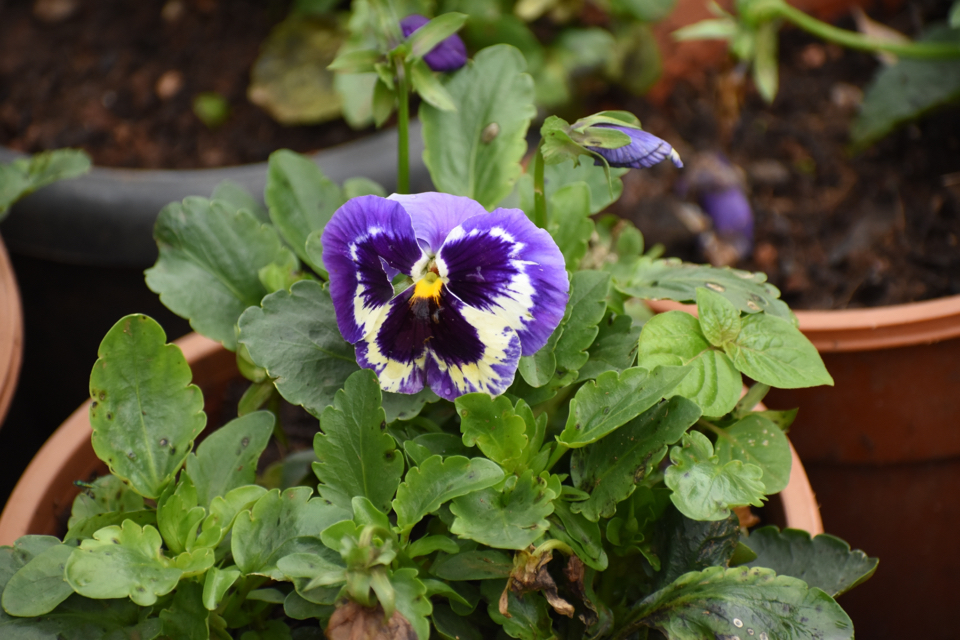
Resulting from the work of Lord Gambier’s gardener William Thompson who discovered the cross between Viola species named V. x wittrockiana in 1839, many new hybrids emerged and by 1850, there were around 400 different named varieties for gardeners to choose from.4Pansy. (n.d.). Aggie Horticulture. Retrieved August 14, 2023, from https://aggie-hort.tamu.edu/archives/parsons/flowers/pansies.html
Many more hybrids have since been developed, and now gardeners can choose from numerous options with flowers in a huge range of colours and shades.
They are among the most popular bedding plants here in the UK, both for the summer and the winter months.
Interestingly, pansies are not only ornamental, as the flowers can also be used as a garnish or added to salads.
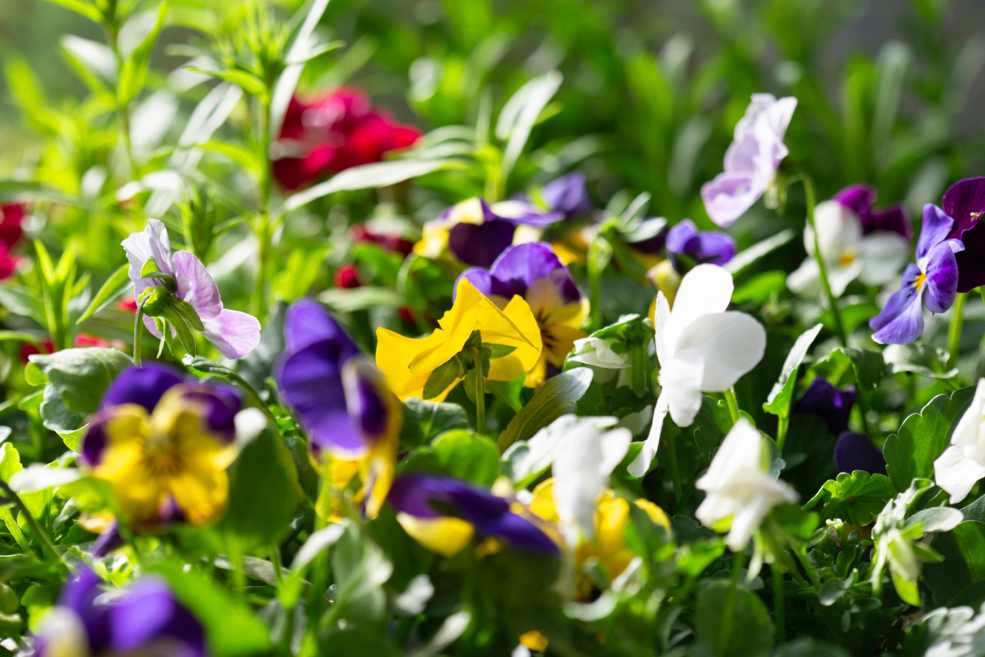
This edible flower can therefore be a useful as well as a beautiful addition to your garden and could be considered as an option for mixed polycultures and companion planting in your kitchen garden.5Pansy Edible Flowers. (n.d.). Nurtured in Norfolk. Retrieved March 22, 2023, from https://nurturedinnorfolk.co.uk/product/pansy-edible-flowers/
Another reason to grow pansies around other edible crops is that they are great for bringing bees and other pollinators into your garden.
These flowers can be a useful nectar source for pollinators, especially in winter and early spring when few other sources are available.
Pansies can make a good ground cover plant, and are often usefully planted along the front of beds or borders, around the edges of other planting schemes, or as a low-growing option around the edges of a container.
A great way to use pansies is to plant them in containers after tulips have been planted in the late autumn; while they will produce few flowers over the winter, from the early spring they produce a great display underneath the tulips which grow through them and flower at the same time.
Varieties
Some Pansies to grow include:
- ‘Adonis’
- ‘Beacon Caramel’
- ‘Bingo’
- ‘Bolero’
- ‘Cat’s Whiskers’
- ‘Cool Wave’
- ‘Freefall’
- Joker Series (AGM)
- ‘Mystique Blue Halo’
- ‘Tiger Eyes’
- ‘Ultima Morpho’
- Universal Series
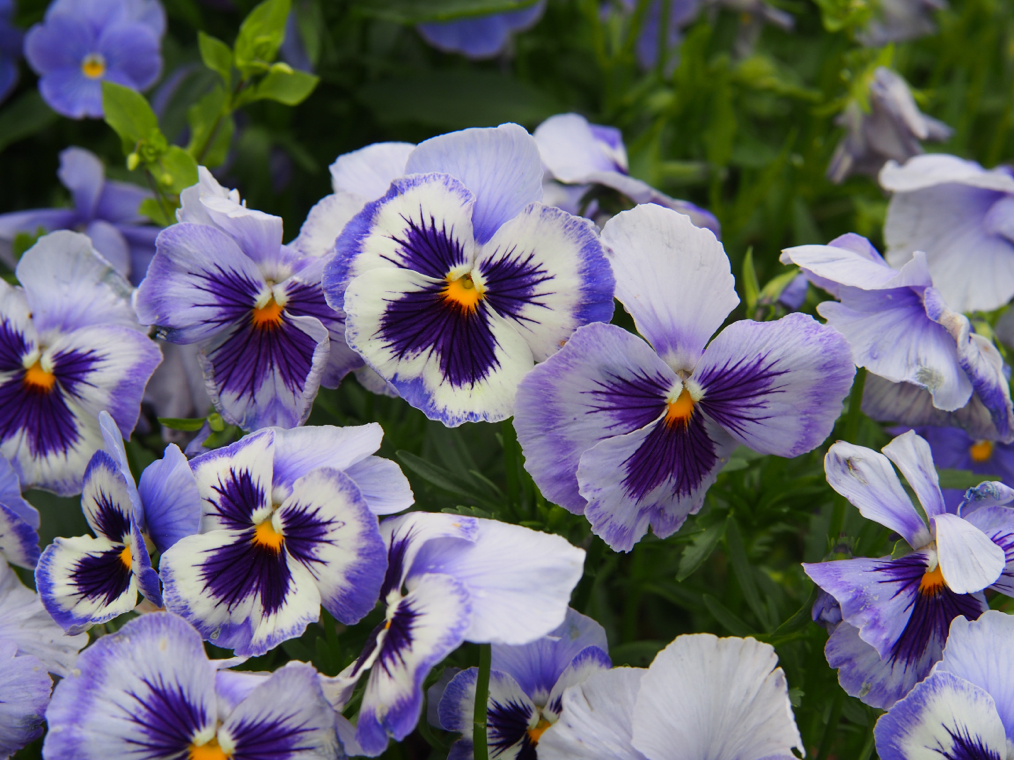
Of course, these are just some of the many options which are now available to gardeners, and which can be picked up fairly easily, sourced from garden centres, plant nurseries, or online vendors.
As well as considering specific cultivars or series, gardeners also have a range of common pansy mixes to choose from, so you are sure to be able to find pansies which fit in with the style of your garden, and help you achieve the specific look that you are going for.
Growing From Seed
Pansies are frequently purchased as plug plants for bedding, but it is a more sustainable and eco-friendly option to avoid plastic pots and peat compost-filled containers and grow from seed.
Pansies are relatively easy to grow from seed, so this can be a great project even for new gardeners, or for kids.
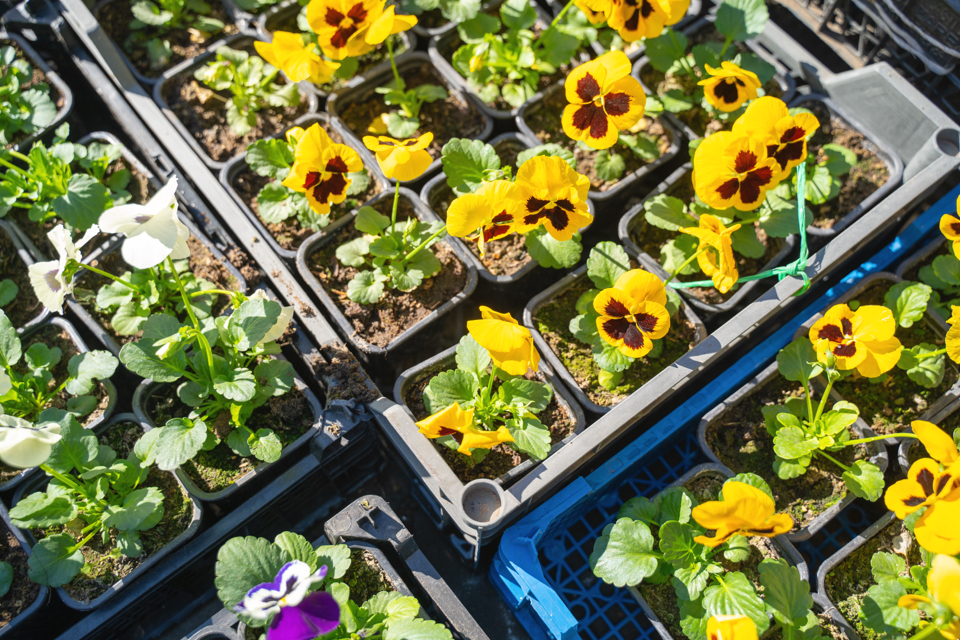
Seeds should be sown under cover between February and April for summer blooms, and between May and July for autumn and winter blooms.
Sow the seeds on top of a tray filled with seed compost and cover lightly with compost or vermiculite, water by standing in a tray of water and leave them in a warm place out of direct sunlight until germination has taken place, ensuring the compost doesn’t dry out.
Transfer the seedlings into their own small pots or plugs once they have two sets of true leaves, and harden them off before planting them out into the garden.
When To Plant
Pansies for summer bedding should be planted out in late spring or early summer and pansies for autumn and winter displays should be planted out in late summer or early autumn.
This will give the young plants time to become established before the winter begins in earnest.
Where To Plant
Typically, pansies should be placed around 15cm apart if they are bush types and around 20-25cm apart if they are trailing types.
One of the great things about these versatile garden flowers is that they can fit into a wide range of different garden types and garden styles.
They can both perform well and look great in many different settings.
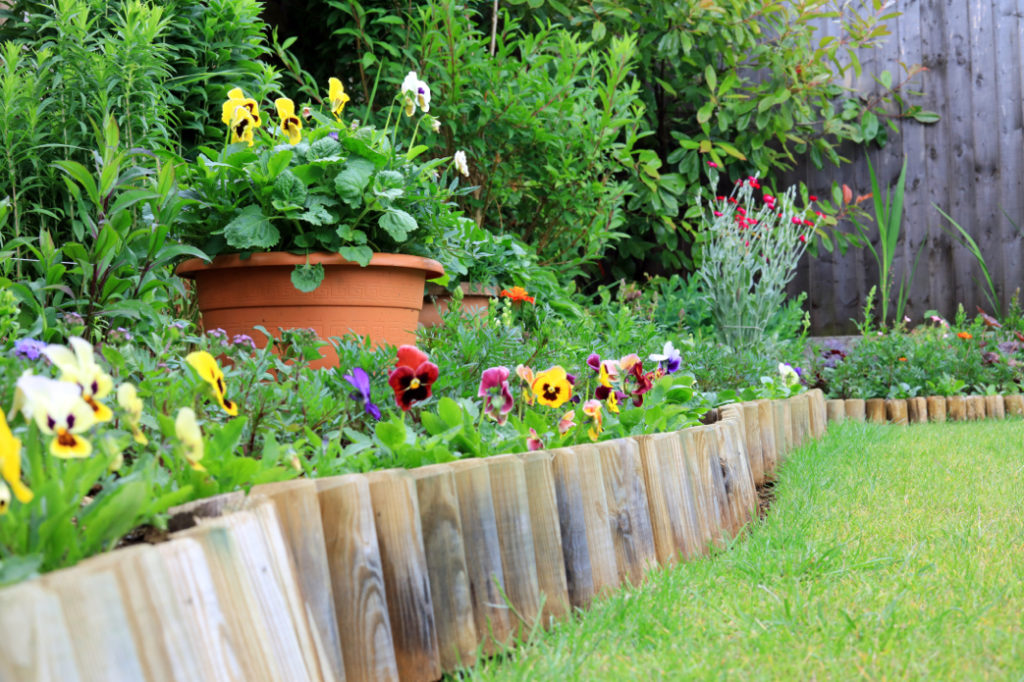
They can be placed in beds or borders, and often make good companions for a range of spring and early summer flowering bulbs, as well as other bedding plants or perennial plantings.
Pansies are often also an excellent choice for a range of different containers and hanging baskets, or even a vertical garden scheme which helps you make the most of your space.
Pansy Care
Pansies are a great choice for more inexperienced gardeners, but it is important to bear a few things in mind to grow them successfully and to keep them in tip-top health.
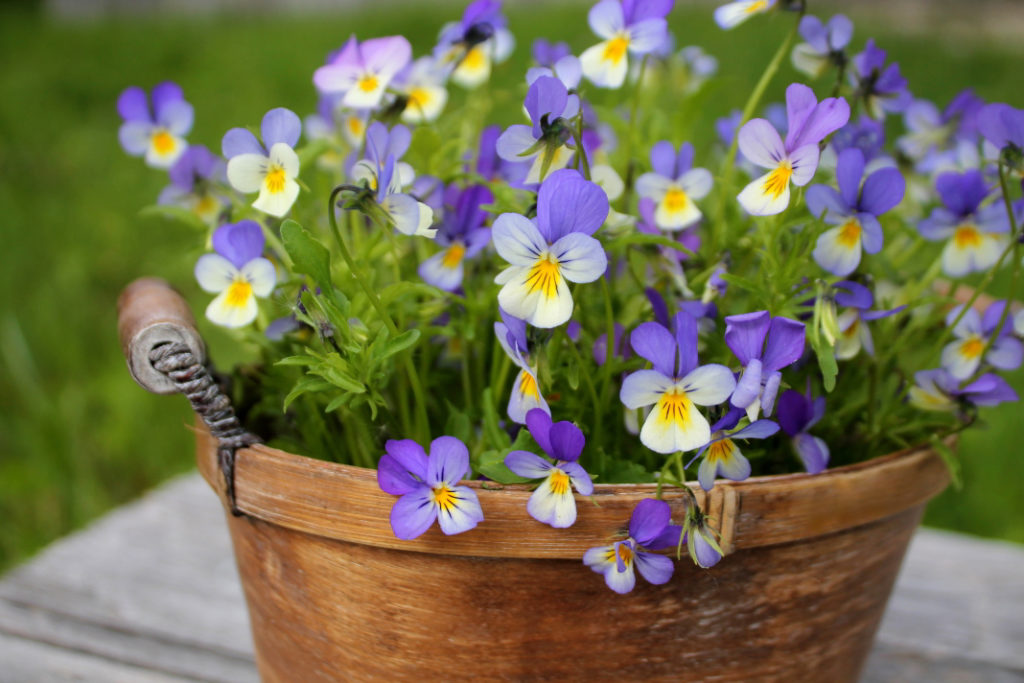
Here are some care guidelines to consider:
Light
Pansies need a location in full sun or partial shade and will flower best in a relatively sunny position.
Soil
They prefer a moist yet free draining clay, loam or sandy soil or growing medium.
A general peat-free multi-purpose compost or equivalent will work well when growing pansies in containers.
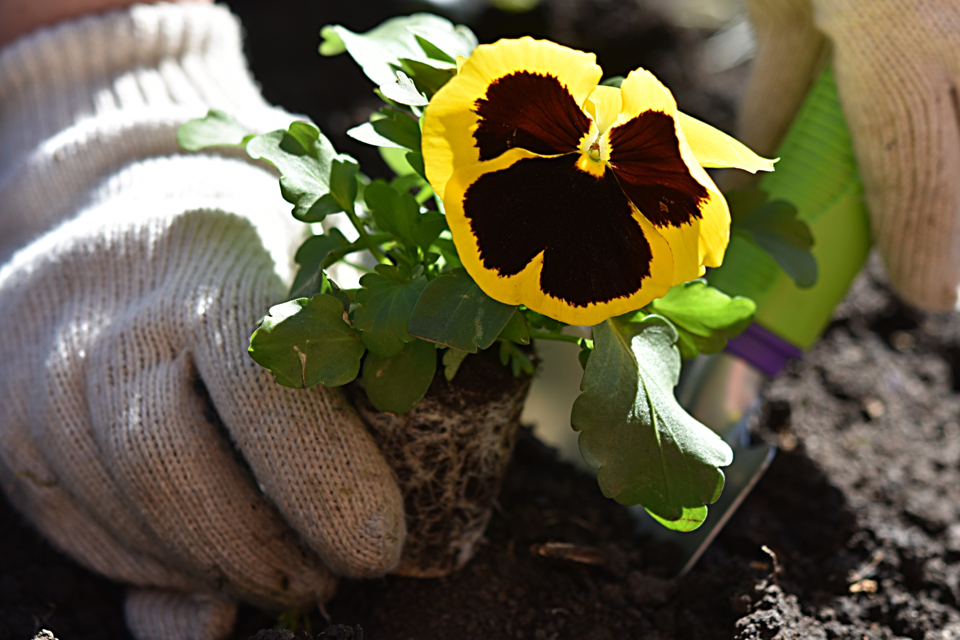
These plants are relatively unfussy about soil pH.
Water
Pansies should be watered during dry spells and particular attention should be paid to watering plants in containers, which will dry out more quickly.
Summer pansies will typically require more water than winter-growing ones.
Make sure that you water the soil, rather than spraying water onto the foliage and flowers, since keeping them dry can help reduce the incidence of fungal diseases.
Temperature & Humidity
Pansy seeds will germinate best at temperatures between around 18-24°C.
When in growth, pansies can easily cope with summer temperatures in the UK, and can survive the winter where temperatures do not fall below -10°C.
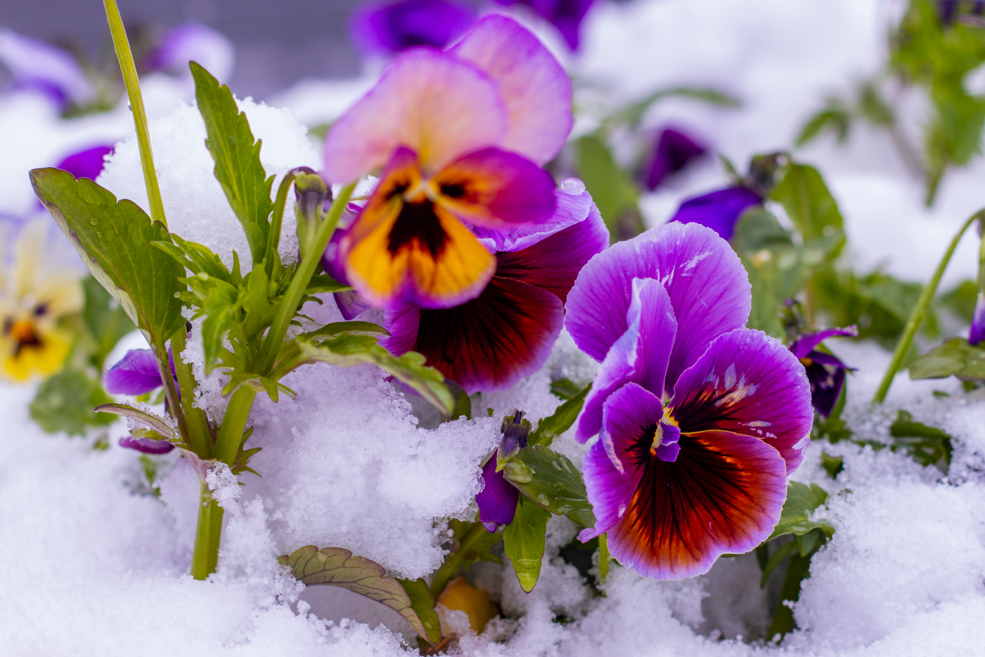
Many pansies are typically hardy throughout most of the UK, even during severe winters.
However, in the coldest and most exposed locations, there may be some risk of frost damage and foliage can suffer especially when growing in pots.
Fertilising
For best results, pansies grown in containers should be fed every couple of weeks during the growing season (spring to autumn) with a balanced organic liquid feed.
Deadheading
Removing the dead and faded flowers from pansies will encourage the plants to put their energy into new flower creation.
This is easily done by pinching out old flowers between thumb and forefinger – during summer this can be a daily task!
Mulching
Mulching around the base of the plants with organic matter can help to ensure good growth and flowering, and retain moisture in the soil or growing medium.
Common Issues & Pests
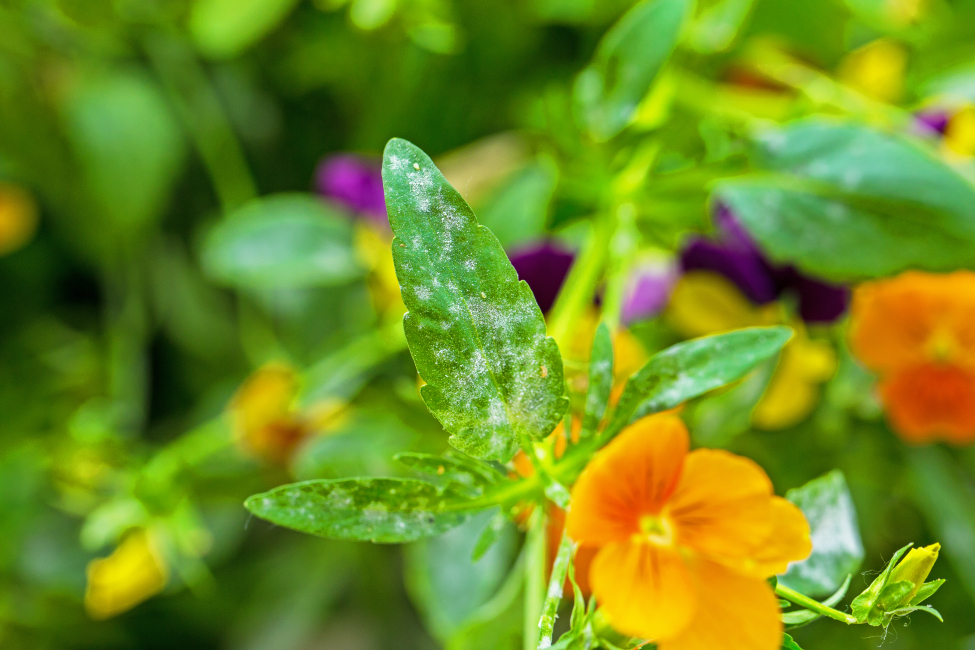
Pansies are often relatively trouble-free but can be bothered by fungal diseases.
Often, spots and blemishes on the leaves are a sign that fungal disease has taken hold.
Fungal issues can also more rarely affect the stems and the centre of the plant can rot in more extreme cases.
Leaf spot, downy mildew and powdery mildew are just some of the fungal problems these plants can experience.
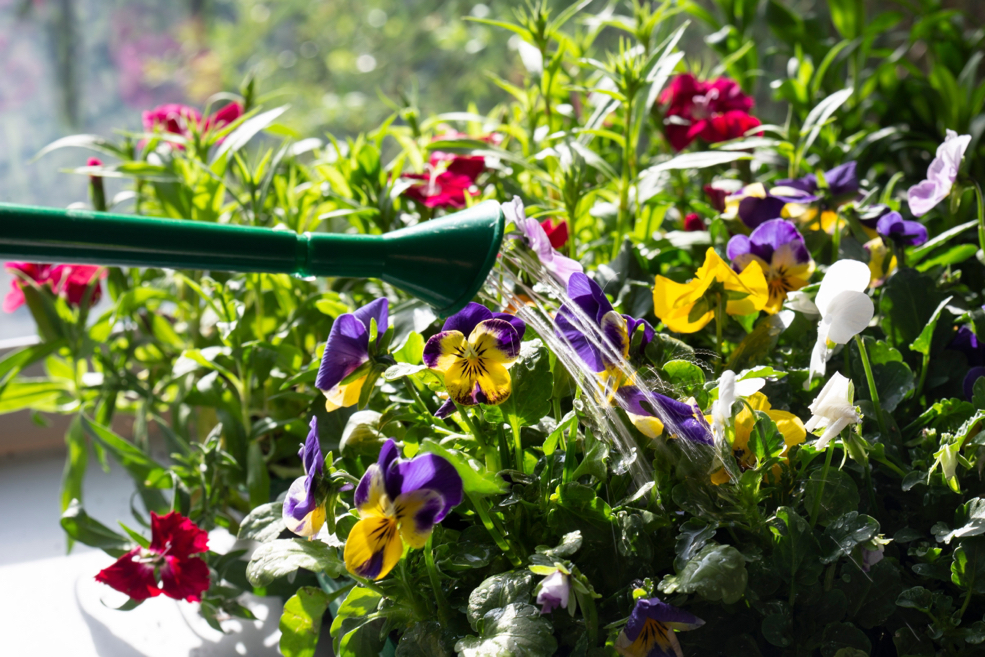
Fungal issues can often be prevented by paying close attention to watering and by making sure that there is good airflow around plants and that they are not overcrowded.
If you spot signs of disease, remove all the infected material as quickly as possible.
Do not grow pansies in the same spot the following year as the fungal spores can remain in the soil or growing medium.
Another common issue with pansies, especially when newly planted, is slugs.
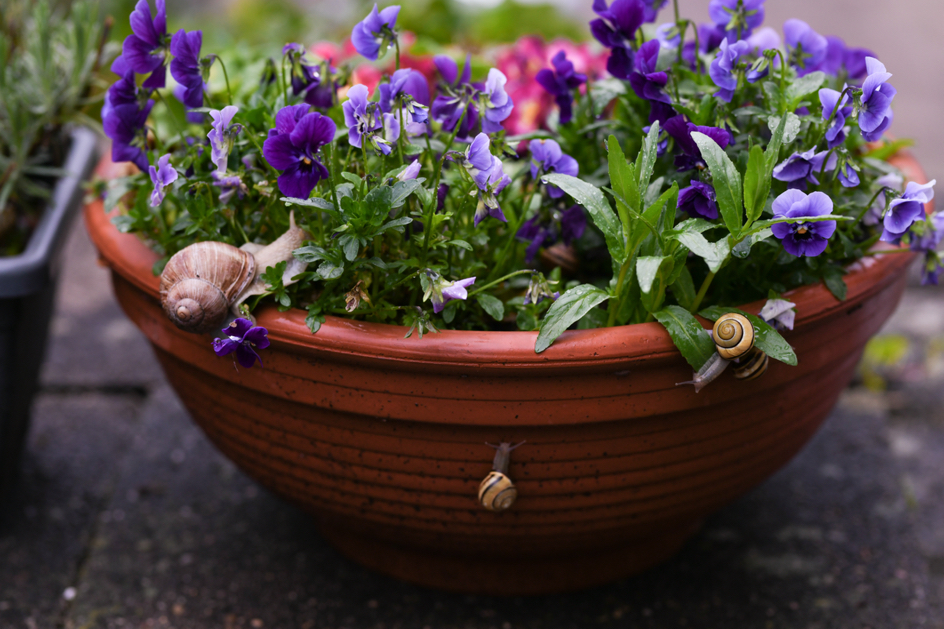
Organic pest management means taking steps to increase the population of predators in your garden which will help to keep the slug population down.
Physical barriers, such as copper tape around pots or sheep’s wool, may be required to prevent slug damage where these pests are particularly prevalent, and if there are lots of slugs, using a beer trap or similar may be necessary.
Aphids and other sap suckers can also be an issue.
By avoiding the use of pesticides, predatory insects like ladybirds and lacewings will naturally develop in your garden and keep down the number of these pests.
References
- 1Viola tricolor. (n.d.-b). North Carolina Extension Gardener Plant Toolbox. Retrieved March 22, 2023, from https://plants.ces.ncsu.edu/plants/viola-tricolor/
- 2Viola vs. Pansy: What’s the Difference? (2020, September 3). Tates of Sussex: Garden Centres. Retrieved March 22, 2023, from https://www.tatesofsussex.co.uk/news/home/viola-vs-pansy-whats-the-difference/
- 3Definition of pansy. (n.d.). In Merriam-Webster Dictionary. Retrieved March 22, 2023, from https://www.merriam-webster.com/dictionary/pansy
- 4Pansy. (n.d.). Aggie Horticulture. Retrieved August 14, 2023, from https://aggie-hort.tamu.edu/archives/parsons/flowers/pansies.html
- 5Pansy Edible Flowers. (n.d.). Nurtured in Norfolk. Retrieved March 22, 2023, from https://nurturedinnorfolk.co.uk/product/pansy-edible-flowers/
